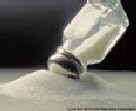Soy for salt: Study reveals long term acceptance of soy sauce substitution

The study – published in Food Quality and Preference – assessed the consumer liking of reduced salt products that had been produced by replacing sodium naturally brewed soy sauce.
The Dutch research team, made up of scientists from Wageningen University, Utrecht University and Kikkoman Europe R&D, tested consumer preferences in a rapidly repeated exposure test to assess how replacing salt with soy sauce would affect long term consumer preferences using soup and bread with ham.
Led by Stefanie Kremer of Wageningen University, the research team revealed that salt reductions of up to 33.4% in were possible without altering taste preferences or long term liking.
“This study demonstrates that it is possible to replace table salt in Western foods partly with naturally brewed soy sauce and to reduce the total sodium content in these foods without significantly lowering consumer acceptance at the same time,” write Kremer and her colleagues.
“The rapidly repeated exposure to products, reduced in salt with the help of naturally brewed soy sauce, has no negative effect on sustained product liking and in most cases has even a very positive effect on the post-test liking of these products with the exception of a small subgroup of consumers that did not like the soy sauce variant of bread,” they add.
Salt reduction
Sodium is a vital nutrient and is necessary for the body to function. However the average daily salt consumption in the western world (between 10 and 12 grams) vastly exceeds maximum recommendations from WHO/FAO of 5 grams per day.
Such high intakes of dietary sodium have been linked to negative health impacts, including the development of hypertension, cardiovascular disease, certain cancers, and other health problems.
And with 80% of salt intake coming from processed foods, many countries have initiated salt reduction programmes.
“Consequently, the development of foods with reduced salt content, which are still equally acceptable for the consumer, is an important challenge for the food industry,” explain Kremer and her team.
The ongoing process of reducing salt levels in foods is, however, a major challenge because in addition to its role as a flavour enhancer and key influence on consumer preference, the food industry has historically added salt to foods to enhance shelf life, modify flavour, improve functionality, and control fermentation.
Study details
Kremer and her colleagues recruited 44 consumers who then performed five forced choice tests to establish the exchange rate (ER) at which table salt could be replaced with soy sauce without significantly changing overall taste intensity.
The same consumers then rated their liking for five samples with varying table salt and/or soy sauce content to determine the optimal exchange rate (OER) – defined as the highest concentration of salt that can be replaced with soy sauce in a product without significant losses in both overall taste intensity and product liking.
The team found that a reduction of 33.4% was possible when using the ER test, whilst the OER test showed slightly more modest reductions of 24.4% were the optimal.
“Finally, a new group of 64 consumers performed rapidly repeated exposure tests with two variants per product type: the non-salt-reduced standard variant (A) and a salt/soy sauce variant (B) based on the OER,” the researchers explain.
The team found that repeated exposure to the soy sauce variant had a significant to very significant positive effect on the liking for the products in all groups of subjects – with the exception of a small group that did not like the soy sauce variant of bread.
Kremer and her colleagues said that in addition to showing that a significant reduction in salt content, without negative impact on taste or liking, is possible via replacement with soy sauce, the results also demonstrate the importance of determining the ER, the OER and the development of preference over repeated exposure in the developed of new low sodium products or reformulated products with reduced salt levels.
Source: Food Quality and Preference
Published online ahead of print, doi: 10.1016/j.foodqual.2012.06.002,
“Consumer acceptance of salt-reduced “soy sauce” foods over rapidly repeated exposure”
Authors: S. Kremer, R. Shimojo, N. Holthuysen, E.P. Köster, J. Mojet
























